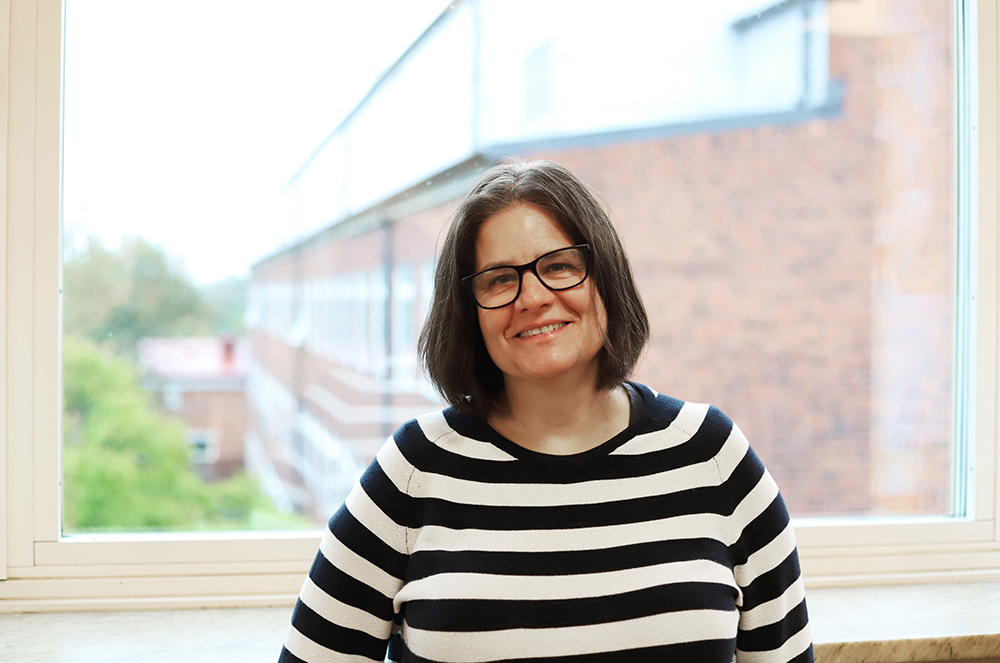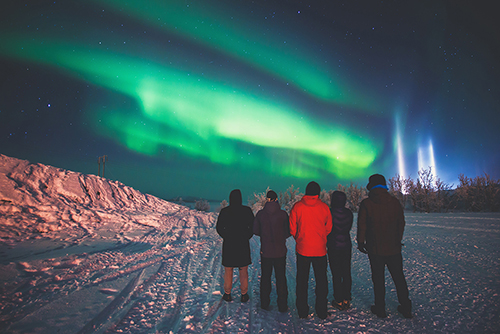Northern lights inspired space physicist's career

This year is like Christmas Eve for fans of the northern lights. The sun is reaching the climax of its 11-year cycle, maximising the chances of seeing the colourful show of light.
“It's super exciting. Even for a physicist, there is something mysterious about the northern lights,” says Anita Kullen, who has been researching the celestial phenomenon for almost 30 years.
In simple terms, the northern lights can be explained by the sun sending out charged particles, called solar wind. Earth's magnetic field largely protects us from the solar wind through a huge protective cavity. However, a smaller proportion of solar wind particles reach the interior of the cavity and move towards the poles. The aurora borealis occurs when these collide with atoms and molecules in the upper atmosphere.
This year, with the most solar activity for more than a decade, the aurora is appearing more often and farther toward the equator. However, the greatest chance of seeing it is around midnight at northern latitudes around Kiruna or Tromsø in Norway. According to Anita Kullen's calculations, the northern lights can be seen here on average every third day in the record year 2024.
But in fact, Earth's aurorae are in place all the time, forming a permanent oval ring around both the north and south poles, she explains.
“It's just that we can't see it with the naked eye in daylight or if the solar wind is too low in energy and the aurora is very dim.”
With maximum solar activity, the oval ring becomes much wider, with the resulting visible aurora reported this year from as far away as Germany and northern Italy.
Exchange year at KTH
Anita Kullen's favourite research interest took off during an exchange year at KTH in the 1990s. Coming from demanding physics studies at the University of Karlsruhe, she wanted to take it a bit easier in Stockholm and took the opportunity to study a few courses that sounded interesting, including space physics. She fell in love with the subject and was inspired to do a thesis on auroral physics.

“Apparently I did well there, because it was published in a scientific journal and I was offered a PhD at KTH. I hadn't thought about postgraduate studies, but okay then, I thought.”
Her research is very much about mapping when and where the northern lights appear under different solar wind conditions. Observing and understanding changes in order to predict the next time it happens. Her speciality is the distribution of global auroras during low solar activity.
“What is so exciting is that the northern lights can also appear inside the oval. For example, across the north pole, which is usually completely empty.”
The phenomenon is called transpolar arcs and has occupied her ever since she began her doctoral studies almost 30 years ago. At the time, she did some pioneering work by analysing and sorting huge amounts of auroral images from satellite images over a three-month period.
"Process is pretty cool"
The research has made Anita Kullen an expert in the field – how the solar wind affects the shape and behaviour of the northern lights on a global scale. “Studying image series and discovering patterns never ceases to fascinate,” she says.
“It can start with a question regarding why the patterns are the way they are and you look at different parameters in satellite data. Suddenly you see connections, which you try to understand. You look in publications for interpretation and explanation. Maybe someone comes up at a conference and contributes an idea. You start to understand how everything is connected and write up your results. This whole process is pretty cool.”
At the same time, the development of knowledge brings new questions:
“The more you understand, the more you realise how little you really know. Things are always more complicated than we originally thought.”
What is the benefit of the research?
“Solar activity can cause interference with communication satellites and similar electronic instruments, which the military in particular is keen to protect. So that's where our knowledge can help,” says Kullen, explaining that her main driving force is curiosity:
“It's curiosity and all the unresolved questions we don't know the answers to. Where do we come from, where are we going and how is everything connected?”
Text: Christer Gummeson ( gummeson@kth.se)
